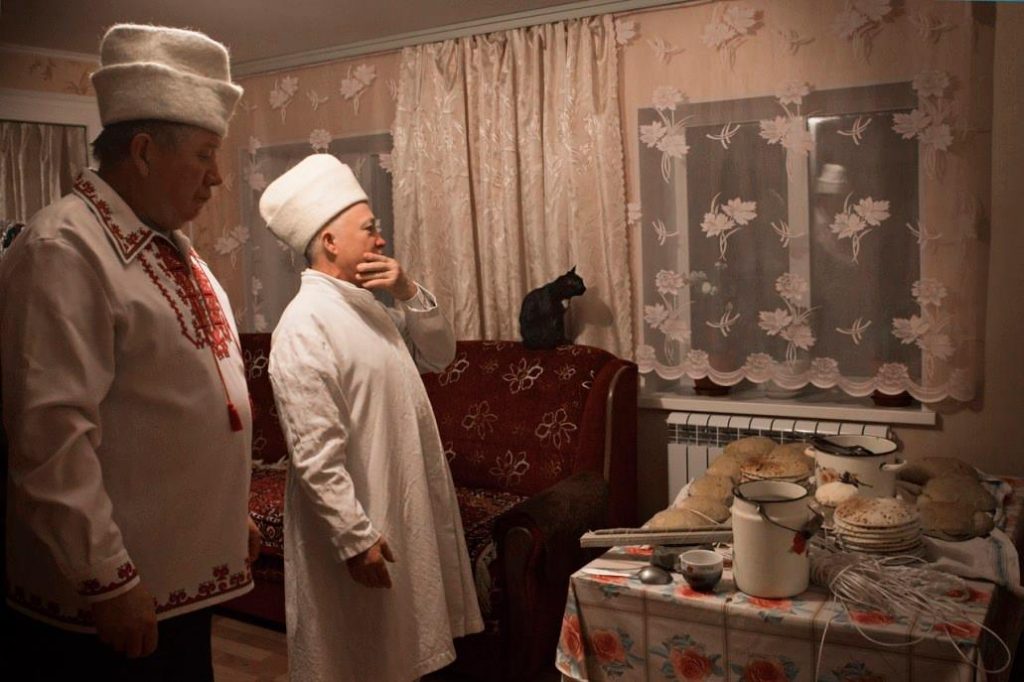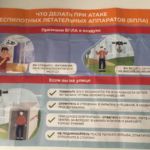On the Mari language and Mari schools

Russian Federation is a multi-lingual and multi-ethnic country with over 100 languages being listed for it in the Ethnologue.com. Yet many of these languages are endangered, with more and more speakers switching to Russian. In part, this process is driven by economic pressures: Russian — like English in so many other parts of the world — is more prestigious and speaking it can lead to better educational and economic opportunities. However, the russification process is also in part politically driven.
Case in point is the Mari language, spoken primarily (though not only) in Mari El, a subject of the Russian Federation situated in the central Volga region.
Total population of Mari El is about 728,000, according to the 2002 census. Of them, ethnic Mari constitute some 43%, with Russians constituting about 48% and other smaller groups such as Tatar and Chuvash, which live mainly in the neighboring areas, accounting for the rest. While this is no longer the case, Mari constituted the majority of the Mari El population as late as the 1939 census. However, while in absolute numbers the ethnic Mari population has been growing, it has been outpaced by the Russian population.
The Mari El area has been occupied by the Mari ethnic group for a very long time: the oldest archeological record dating from the 5th century. Throughout history, the Mari were paying tribute to Volga Bulgaria and the Golden Horde. In the 1440s the area was incorporated into the Khanate of Kazan and was occupied by Russia after the fall of Kazan in 1552. In 1920, it became Mari Autonomous Oblast and in 1936 was re-organized into Mari Autonomous Soviet Socialist Republic. After the dissolution of the Soviet Union, the Mari El Republic was formed in 1990.

As far as religion is concerned, the most common religions in Mari El include Russian Orthodoxy, Old Believers and Islam. However, the traditional Mari pagan faith is still practiced to some degree by many Mari people, as is the Marla faith, which is a combination of these traditional beliefs and modern Christianity. Despite the constitutional provisions for the freedom of relion, the traditional Mari religious practices have come under increasing pressure, according to human rights groups.
Likewise, the Mari language (a member of the Finnic branch of the Finno-Ugric language family) is under pressure. The absolute number of Mari speakers is pretty healthy: about 451,000 people speak the language (though not all of them live in Mari El, with groups of Mari speakers also living in Tatarstan, Udmurtia, and Perm regions). However, not all ethnic Mari today speak the traditional language. Statistics show a gradual downward trend towards assimilation to Russian during the Communist period: the 1926 census indicated more than 99% of Maris considered Mari their first language, declining to less than 81% in 1989.
These figures are a result of the long-term policy of gradual Russification that started already in Imperial Russia: with the exception of some enthusiasts and numerous ecclesiastical texts by the Russian Orthodox Church, there was almost no education in Mari language. After the Bolshevik Revolution, there was a period of support of all lesser national cultures in the Soviet Union, but eventually the policy of Russification was resumed. On the one hand, the Soviets at least nominally supported the development of literary minority languages such as Mari, but on the other hand, only elementary education in the language — mostly in village schools — was available during the Soviet period.
Since the 1990s, new opportunities opened up for a revival of efforts to expand the use of Mari in education and the public sphere. In the 1990s, the Mari language, alongside Russian, was proclaimed in the republican constitution to be an official language of Mari El. By the beginning of the 21st century, Mari language and literature was taught in 226 schools. At the History and Philology Department of the Mari State University and the Krupskaya Teachers’ Training Institute (Yoshkar-Ola), more than half of the subjects are taught in Mari.
According to a recent survey by the Mari Research Institute more than 3/4 of Maris survey considered Mari language to be the most crucial marker of ethnic identity, followed by traditional culture (61%) and common historical past (22%), religion (16%), character and mentality (15%) and appearance (11%).

Against this background of linguistic revival come the recent news of closure of the only Mari-language school in the Perm’ region. The decision of the regional authorities to turn the only Mari national comprehensive school into a primary school has been met with an outrage from the Mari inhabitants of the village where the school was located. It is viewed as an example of discrimination of the Mari ethnic minority in the region. Various Mari organizations such as Mer Kangash and Mari Ushem as well as Finno-Ugric organizations such as as the International Consultative Committee of Finno-Ugric Peoples, the MA Casrén Society in Finland, Fenno-Ugria in Estonia joined in the protest and even Members of the European Parliament Satu Hassi and Heidi Hautala expressed their protest against the closure of Mari schools. It remains to be seen whether the authorities will be pressured into changing their decision.
Asya Pereltsvaig


Leave a Reply